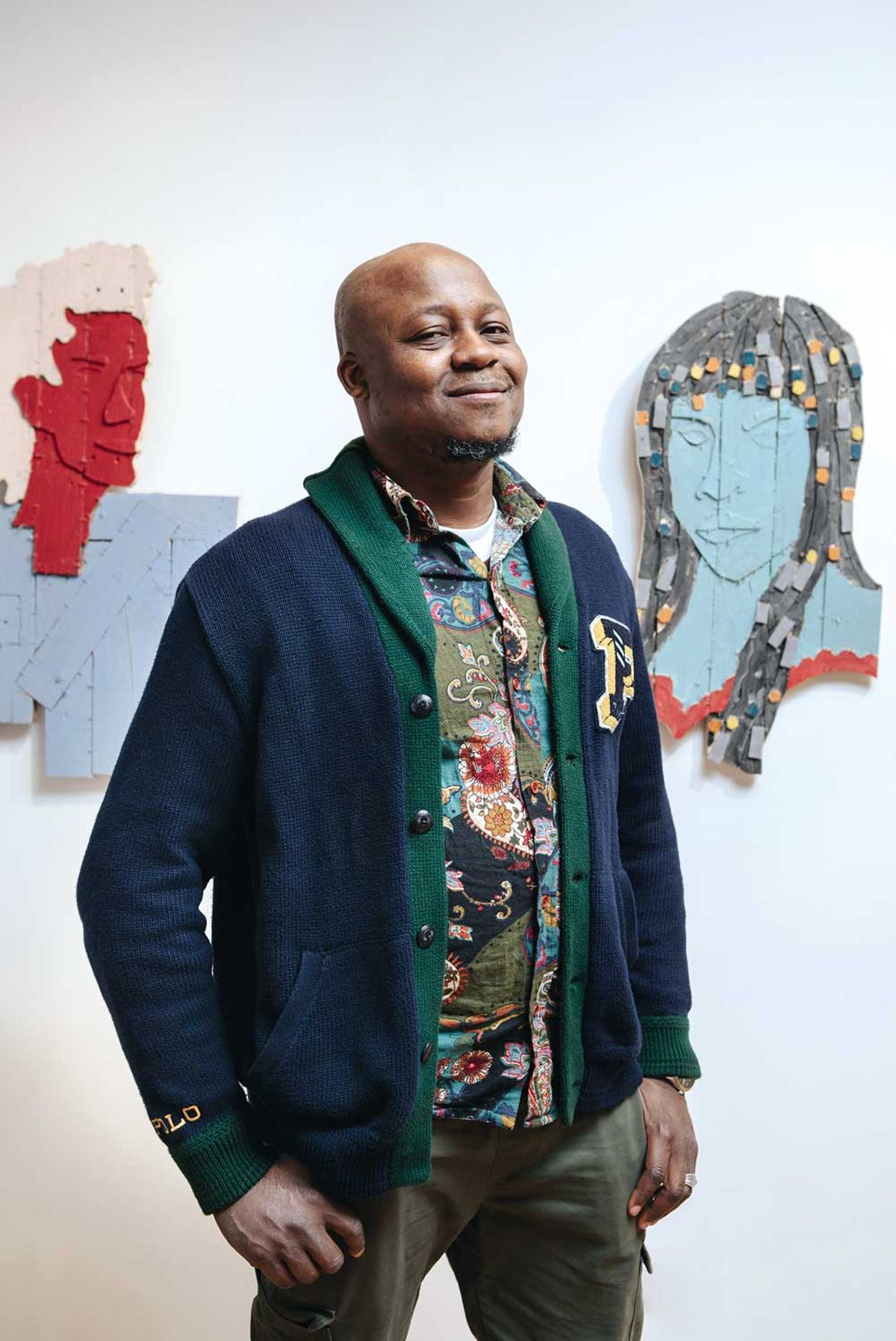Not long after the invasion of Ukraine last year, a group of Russian artists decided to leave their country to continue their careers abroad. Among them was the award-winning Vladimir Logutov, a video and installation artist, whose work is in major Russian galleries and who has previously held exhibitions in China and several European countries, and the UK.
Logutov came to the UK via a circuitous route of Belarus, Georgia and Dubai. Once here, he was given a Global Talent Visa by the UK government to live and work. One of his sponsors, who helped him get his visa, was Jonathan Watkins, who ran Birmingham’s Ikon gallery from 1999 until last year.
Logutov is among the 726 foreigners in the arts and creative industries to gain one of these visas last year—double the 2021 total. Most have come to the UK for political and/or economic reasons. Last year they arrived from 69 different countries including the heavyweights Russia, China, the US and Nigeria, but also Palestine, Syria, Uruguay, Chile, Iceland and Zimbabwe.
Obtaining these figures and countries of origin did, however, require a Freedom of Information request. Maybe because the Home Office is wary to admit to such high numbers? These talent visa figures also contrast with the frustration of some overseas artists trying to perform in the UK, seemingly because they did not have the right temporary visas or paperwork. Those recently thwarted include the Khmelnitsky Orchestra from Ukraine and the German punk band Trigger Cut.
This Conservative government is perceived as being “anti-immigration”, unless those seeking work here are in areas like health, with its clear shortages, or where they can prove they are coming to decently paid jobs. Yet many being given Global Talent Visas in the arts and creative industries have work which is usually not well paid and very uncertain.
Undaunted, Abdulrazaq Awofeso, a Nigerian artist who specialises in wood and found materials, was determined to get to the UK. “There are so many better prospects here. In Nigeria there is also so much corruption,” Awofeso says. He first heard about the Global Talent Visa from a friend in Nigeria. He initially contacted the Home Office and then got letters of recommendation from three different galleries around the world in which he had already exhibited. His application, like all others for visual artists, was then forwarded to Arts Council England (ACE), which, after a sifting process overseen by its director of international, Nick McDowell, makes recommendations to the Home Office. Over the past couple of years, it has agreed visas for about three-quarters of those put forward by ACE.
Awofeso, who now lives in Birmingham, has just held a solo exhibition at Ed Cross gallery in London, and has another in July at the South London Gallery. He supplements his art income by working as a carpenter.
His compatriot Chika Jones, a performance artist, left Nigeria after run-ins with the police, which he says were over his dreadlocks. He considered trying for a visa for both Canada and the UK but found the British system easier to navigate. Like others, he had to pay £623 for processing his application, plus the £624 annual healthcare surcharge to be able to use the NHS. While Jones has been reasonably successful as a performance artist, he makes ends meet as an online editor, and his wife works as an accountant. After five years, Jones can apply for Indefinite Leave to Remain, so he could settle in the UK permanently.
Not just oppressive countries
Getting out of Iran last year was a priority for the photographers Babak Kazemi and his partner Pargol E. Naloo, who found the regime oppressive and getting gainful employment very tough. “We heard about the visa scheme from friends in Iran and just thought it seemed worth trying,” says Naloo. In fact it was Kazemi who applied while temporarily living in France. He received his visa very quickly after recommendations from the Delfina Foundation and Fariba Farshad, the co-founder of Photo London, the photography fair. Naloo has also received her visa, though it is under the name of her partner. They are both landscape photographers, who still use film. “I fell in love years ago with the magic of the darkroom,” says Kazemi.
Most seeking to work in the UK via a Global Talent Visa come from oppressive or poor countries. Not so August Lamm, a 27-year-old American. She initially considered applying to France and Germany for a Global Talent Visa, but found applying here easier. Lamm, an illustrator and painter, received one of her recommendations from Alastair Adams, until recently the president of the Royal Society of Portrait Painters, whom she met when he was working in New Haven, Connecticut. “London is the world centre for figurative art and portraiture, so that’s why I wanted to come here,” says Lamm, who has also recently published a book, Crosshatching in Pen and Ink.

Robert Jenrick, the immigration minister, says the Global Talent Visa is “attracting world-class artists and musicians” to the UK
Photo: Wiktor Szymanowicz/Future Publishing via Getty Images
It looks as if just as many, if not more, Global Talent Visas will be granted this year. Surprising perhaps, as there are many misgivings, particularly within the Conservative Party, about levels of immigrantion. Yet this scheme is adding to our creative pool—something that even some ministers accept as important.
“We’ve transformed the immigration system to encourage the best and brightest to come to the UK, including recognising the immense contribution the creative industries make to our rich culture,” says the immigration minister Robert Jenrick. “Through our Global Talent route, the UK is attracting world-class artists and musicians. It is open to promising individuals who are leaders in their field.”


